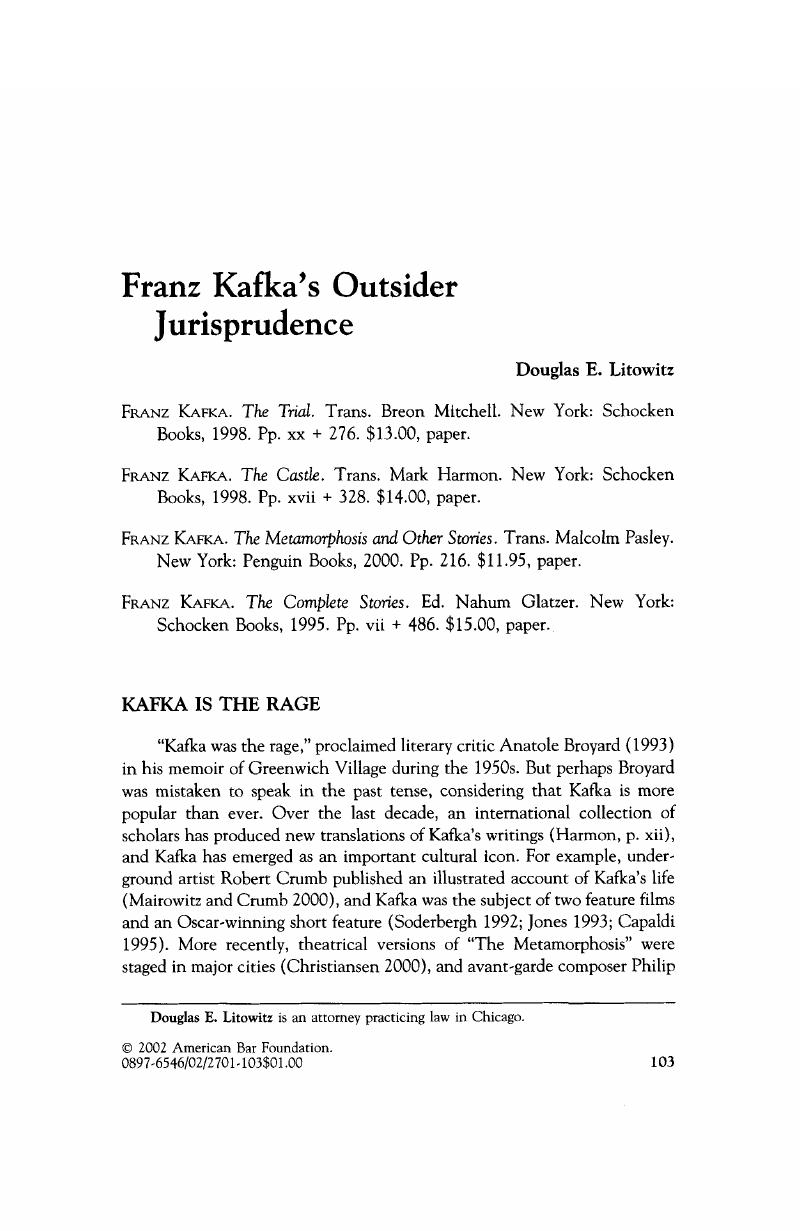Crossref Citations
This article has been cited by the following publications. This list is generated based on data provided by Crossref.
Mussawir, Edward
2004.
Aesthetics of Law and Culture: Texts, Images, Screens.
Vol. 34,
Issue. ,
p.
111.
Škop, Martin
2011.
Milan Kundera and Franz Kafka - How Not to Forget Everydayness.
Creative and Knowledge Society,
Vol. 1,
Issue. 2,
Munro, Iain
and
Huber, Christian
2012.
Kafka’s mythology: Organization, bureaucracy and the limits of sensemaking.
Human Relations,
Vol. 65,
Issue. 4,
p.
523.
Kaplan, Robert M.
2014.
Joseph K. Claims Compensation: Franz Kafka’s Legal Writings.
Advances in Historical Studies,
Vol. 03,
Issue. 02,
p.
115.
McCabe, Darren
2015.
The Tyranny of Distance: Kafka and the problem of distance in bureaucratic organizations.
Organization,
Vol. 22,
Issue. 1,
p.
58.
Banakar, Reza
2015.
Normativity in Legal Sociology.
p.
99.
Buonamano, Roberto
2016.
Kafka and legal critique.
Griffith Law Review,
Vol. 25,
Issue. 4,
p.
581.
Ossewaarde, Marinus
2019.
Kafka on gender, organization and technology: The role of ‘bureaucratic eros’ in administering change.
Gender, Work & Organization,
Vol. 26,
Issue. 7,
p.
1000.
Liska, Vivian
2022.
Law and Sacrifice in Kafka and His Readers.
Interdisciplinary Journal for Religion and Transformation in Contemporary Society,
Vol. 8,
Issue. 2,
p.
256.
Vilaça, Guilherme Vasconcelos
2024.
Broken April: Narratology, Legal Normativity, and the Experience of Law.
Law and Critique,



